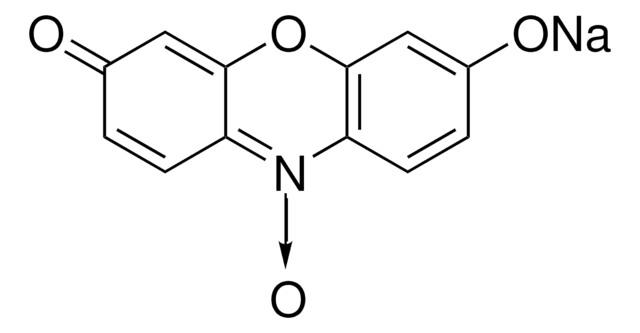S7899
Sodium acetate buffer solution
pH 5.2±0.1 (25 °C), for molecular biology, 3 M, 0.2 μm filtered
Synonym(s):
Sodium acetate buffer 3M
Sign Into View Organizational & Contract Pricing
All Photos(2)
About This Item
CAS Number:
Beilstein:
3786729
MDL number:
UNSPSC Code:
12161700
eCl@ss:
32129211
PubChem Substance ID:
NACRES:
NA.52
Recommended Products
grade
for molecular biology
Quality Level
sterility
0.2 μm filtered
form
liquid
concentration
3 M
pH
5.2±0.1 (25 °C)
suitability
suitable for DNA precipitation
storage temp.
room temp
SMILES string
[Na+].CC(O)=O.CC([O-])=O
InChI
1S/2C2H4O2.Na/c2*1-2(3)4;/h2*1H3,(H,3,4);/q;;+1/p-1
InChI key
BHZOKUMUHVTPBX-UHFFFAOYSA-M
Looking for similar products? Visit Product Comparison Guide
Related Categories
General description
Sigma′s Sodium Acetate Buffer is a 3M solution prepared with 18 megaohm water and filter-sterilized.
Application
Sodium acetate buffer solution is suitable for precipitation of DNA, elution of proteins and for use in molecular biology applications such as ChIP-on-ChIP assay and in vitro enzyme inhibition assay.
Signal Word
Danger
Hazard Statements
Precautionary Statements
Hazard Classifications
Eye Dam. 1
Storage Class Code
10 - Combustible liquids
WGK
WGK 1
Flash Point(F)
Not applicable
Flash Point(C)
Not applicable
Choose from one of the most recent versions:
Already Own This Product?
Find documentation for the products that you have recently purchased in the Document Library.
Sambrook, J., and Russell, D.W.
Molecular Cloning: A Laboratory Manual, A1-A1 (2001)
Saika Siddiqui et al.
Molecules (Basel, Switzerland), 26(1) (2021-01-07)
E. coli O157:H7 is a pathogenic bacterium producing verotoxins that could lead to serious complications such as hemolytic uremia syndrome. Fast detection of such pathogens is important. For rapid detection, aptamers are quickly gaining traction as alternative biorecognition molecules besides
Tomas Erban et al.
Scientific reports, 7(1), 5084-5084 (2017-07-13)
Honeybee (Apis mellifera L.) workers act as passive vectors of Paenibacillus larvae spores, which cause the quarantine disease American foulbrood (AFB). We assessed the relative proportions of P. larvae within the honeybee microbiome using metabarcoding analysis of the 16 S rRNA
Sena Bluemel et al.
Gut microbes, 11(3), 265-275 (2019-04-16)
Alcohol-induced liver disease is closely related to translocation of bacterial products and bacteria from the intestine to the liver. However, it is not known whether bacterial translocation to the liver depends on certain intestinal microbiota changes that would predispose bacteria
Chun-Chun Chen et al.
Journal of visualized experiments : JoVE, (62)(62), doi:10-doi:10 (2012-05-09)
Knowing the timing, level, cellular localization, and cell type that a gene is expressed in contributes to our understanding of the function of the gene. Each of these features can be accomplished with in situ hybridization to mRNAs within cells.
Protocols
Selection of Poly(A)+ RNA by Oligo(dT)-Cellulose Chromatography
Our team of scientists has experience in all areas of research including Life Science, Material Science, Chemical Synthesis, Chromatography, Analytical and many others.
Contact Technical Service







